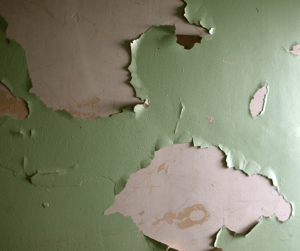The U.S. EPA is strengthening requirements for the removal of lead-based paint hazards to protect children and communities better. That means if your building was built prior to 1978, it might be time to tackle the lead-based paint that’s been hiding in your walls for decades.
If you oversee childcare facilities, schools, government offices and other commercial buildings, you may soon face these stronger standards that will require abatement activities. If you’re a contractor that specializes in lead-based paint removal, you may soon see an influx of requests.
Yet removing lead-based paint from a property is just one step in the process. Though intended to protect families from the harmful effects of exposure to dust generated from lead paint, the abatement process must be expertly executed from start to finish, including the proper disposal of hazardous materials.
The Dangers Of Lead-Based Paint
This month, the U.S. Environmental Protection Agency announced a proposal that would strengthen requirements for the removal of lead-based paint hazards in buildings built prior to 1978 and childcare facilities in an effort to better protect the health of children and the community.
the removal of lead-based paint hazards in buildings built prior to 1978 and childcare facilities in an effort to better protect the health of children and the community.
Dust generated from lead paint can have harmful effects, especially in children. Even minimal exposure can harm children, unborn babies and pregnant women who are regularly in an environment where lead-based paint is present.
Ingesting lead paint chips or breathing lead paint dust can cause lead to get into the bloodstream. Children can also be exposed to lead contamination in soil.
Lead poisoning can occur, producing symptoms like headaches, muscle pain, digestive problems, memory loss and pregnancy complications. More severe long-term health problems can occur as well, such as kidney damage, nervous system issues, learning disabilities and birth defects.
According to the EPA, if the new paint standards go into effect, the agency estimates the rules will reduce the lead exposures of nearly 250,000 to 500,000 children younger than 6 each year.
The goal: Eradicate lead-based paint hazards from homes and childcare facilities throughout the United States. Let’s dive into how.
New Proposed Paint Standards
If finalized, the proposed rules would strengthen the EPA’s regulations under section 402 of the Toxic Substances Control Act by revising the dust-lead hazard standards (DLHS), which identify hazardous lead in dust on floors and window sills.
The revisions would also impact dust-lead clearance levels (DLCL), or the amount of lead that can remain in the dust on floors, window sills and window troughs after lead removal activities, according to the EPA.
More specifically, the proposal would reduce DLHS from 10 micrograms per square foot for floors and 100 micrograms per square foot for window sills to any reportable level greater than zero.
The proposed changes would also lower the DLCL from:
- 10 micrograms per square foot to 3 micrograms per square foot for floors
- 100 micrograms per square foot to 20 micrograms per square foot for window sills
- 400 micrograms per square foot to 25 micrograms per square foot for window troughs
Why are these numbers important? Property owners, lead-based paint professionals and government agencies use these figures to identify hazards in residential and childcare facilities built prior to 1978, according to the EPA. When an abatement (or removal of the lead-based paint) is performed, testing is required to ensure dust lead levels are below the specified numbers above … or the abatement is considered incomplete.
While the U.S. government banned lead-based paint for use in houses and apartments in 1978, there are still as many as 31 million homes built before this year that still contain lead-based paint, the EPA estimates.
What These Proposed Standards Mean For You
Whether you own a home, oversee a school district or daycare, manage a government office building or run a business, it’s important to monitor the progress of these proposed lead-based paint removal requirements if your building was built prior to 1978.
Many realtors may want to pay close attention to these new standards as well, since the EPA recommends that home buyers hire a certified inspector or risk assessor to test for lead-based paint prior to purchasing a home.
If your business specializes in lead-based paint removal, it’s important that you stay up-to-date as these regulations evolve as well.
As we pointed out above, removing unearthed lead-based paint is just one step in the process of creating a safe environment for kids. Contractors and anyone else who is removing this paint must follow safe work practices for disposing of it as well.
Hazardous waste may not only includes the paint chips or drywall itself, but the following items that were exposed to lead-based paint dust as well:
- Protective sheeting
- HEPA filters
- Dirty water
- Cloths
- Mop heads and wipes
- Protective clothing
- Respirators and gloves
- Other architectural components
When having lead-based paint removed from your property or facility, it’s important that you work with a business that partners with a reputable disposal company. Hazardous waste disposal companies should be experienced in transporting and disposing of toxic substances to help ensure you are meeting all state and federal regulations.
If you’re a painter or contractor specializing in removing lead-based paint, it’s important to consider the reputation of your business, as well as the benefits that can come with working with an experienced disposal company.
The best hazardous waste disposal company will:
- Locate the type of landfill that accepts your waste
- Help you determine which of your materials can be classified as non-hazardous waste (saving time and money)
- Develop a customized transportation plan
- Complete regulatory paperwork
- Provide you with proof that your lead paint-contaminated products have been properly disposed of
- Have in-depth knowledge of the rules and regulations that apply to your renovation or abatement company
Only work with certified companies that are registered with the DTSC and avoid hazardous waste brokers that act as unqualified middlemen who drive up costs.
As environmental regulations continue to evolve, an experienced disposal company will help to ensure that the abatement process is completed safely and those vulnerable to the effects of lead-based paint exposure are protected.


Comment